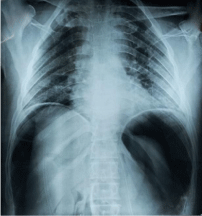
Case Report
Austin Surg Case Rep. 2016; 1(2): 1009.
Colorectal Barotrauma – A Case Report
Vilanilam GK¹* and Upadhyay S²
¹Department of General Surgery, Christian Medical College and Hospital, India
²Department of General Surgery, RAK Hospital, United Arab Emirates
*Corresponding author: Vilanilam GK, Department of General Surgery, Christian Medical College and Hospital, India
Received: July 18, 2016; Accepted: September 11, 2016; Published: September 16, 2016
Abstract
Non-iatrogenic colonic perforation is a significant occurance in India. However, most of the cases do not present promptly to a health care centre while the rest of them are not reported. Perforation resulting in tension pneumoperitoneum is an emergency and the main cause of death is respiratory distress due to heart failure. This requires prompt recognition of symptoms and signs and emergency management even in the absence of an adequate history owing to the patient’s condition.
Keywords: Colorectal barotrauma; Compressed air; Industrial accidents; Pneumoperitoneum; Emergency laparotomy
Case Presentation
Colorectal injury due to barotrauma from compressed air is infrequent as compared to solid objects [1]. But, with the increase of the use of high-pressure compressed air in industrial work, the risk of associated pneumatic injuries has also increased. The subsequent accumulation of free intra-abdominal air under pressure causes tension pneumoperitoneum, which rapidly and adversely affects the cardio-respiratory functions and results in high mortality [2]. We report a case of colorectal barotrauma in a victim of assault.
History
A 45-year-old male, with no known comorbidities, presented to the emergency room with complaints of severe abdominal pain, abdominal distension, bleeding per rectum and respiratory distress. Preliminary history revealed that he was assaulted by a co-worker by intentional release of high-pressure compressed air blown transanally with an air hose. On examination, he was tachypneic and his saturation on room air was 81%. An initial arterial blood gas was done which showed primary metabolic acidosis with secondary respiratory alkalosis. Abdominal examination revealed a grossly distended abdomen with a tympanic percussion note, obliteration of liver dullness and absent bowel sounds. A digital rectal examination showed a collapsed rectum and scant rectal bleed. Proctoscopy revealed a circumferential erosion of the rectal mucosa. An urgent percutaneous needle decompression of the pneumoperitoneum was done, which let out copious intra-peritoneal gas whistling out, confirming the diagnosis of tension pneumoperitoneum, following which abdominal distension and respiratory distress were immediately relieved.
His initial investigations were unremarkable except for haemoconcentration (Table 1). His Chest X-ray showed a large pneumoperitoneum (Figure 1). The patient was consequently taken up for emergency exploratory laparotomy. Intra-operatively, a 1.5 x 1.5cm perforation was noted at the junction between the descending colon and sigmoid colon, multiple serosal tears at the sigmoid colon and the descending colon and the peritoneal cavity was filled with serosanguinous fluid. The perforation site was identified and a single layered primary closure was done and a proximal loop colostomy was made. He was discharged after an uneventful recovery.
Hemoglobin
Hematocrit
Total Leucocyte count
Platelet count
Blood Urea
Serum creatinine
15.8 g/dl
54%
12,500
3.14 lakh
42
1
Table 1: Initial blood investigations.

Figure 1: Chest X-ray showing a large pneumoperitoneum.
Discussion
The incidence of iatrogenic colonic rupture due to colonoscopies is about 0.1 to 0.5%, whereas the incidence of non-iatrogenic perforation in India is not documented [1]. It takes about 1-2 seconds to deliver enough pressurized air to cause major damage. The rupture usually occurs in a longitudinal fashion along the muscle fibres with full thickness perforation or with stripping of the serosa and muscularis [2]. According to Burt, the average pressure necessary to rupture the full thickness of bowel is 0.29 kg/cm2 [3]. The most injury location is the anti-mesenteric surface of sigmoid and recto-sigmoid junction owing to the bilateral fixation, limited mobility of the rectosigmoid junction along with easily increasing intramural pressures [1,4,5]. In majority of the cases the spectrum of abdominal pain, abdominal distension, bleeding per rectum, tachycardia, tachypnea will be present. Tension pneumoperitoneum is a characteristic presentation [2]. Enhanced intra-abdominal pressure and upward displacement of the diaphragm leads to chest compression causing respiratory distress. Decreased preload and peritoneal shock can cause acute heart failure. Causes of death in such situations are acute air embolism, acute fat embolism and acute respiratory insufficiency. Emergency peritoneocentesis and surgical intervention markedly reduces the mortality associated [2].
Conclusion
Compressed air related colorectal injuries are rare conditions admitted to emergency departments. The diagnosis is not difficult if the patient has a history of abdominal pain and distension after exposure to the compressed air. At times, history taking is not possible due to the patient’s condition; the physical and radiological findings of tension pneumoperitoneum can make the physician diagnose injury and etiology.
References
- Choi JY, Park KS, Park TW, Koh WJ, Kim HM. Colon barotrauma caused by compressed air. Intest Res. 2013; 11: 213-216.
- Ergin M, Ozer MR, Kocak S, Karakus N, Babagil B, Cander B. A rare case of colorectal injury with compressed air. J Med Cases. 2013; 4: 159-160.
- Madhav T, Suhas T, Raghu K. Colonic barotrauma with tension pneumoperitoneum-review of literature and report of a successfully treated case. IJSR. 2014.
- Burt AV. Pneumatic rupture of the intestinal canal with experimental data showing the mechanism of perforation and the pressure required. Arch Surg. 1931; 22: 875-902.
- Coffey JC, Winter DC, Sookhai S, Cusack SP, Kirwan WO. Non-iatrogenic perforation of the colon due to acute barotrauma. Int J Colorectal Dis. 2007; 22: 561-562.
- Choi JY, Park KS, Park TW, Koh WJ, Kim HM. Colon barotrauma caused by compressed air. Intest Res. 2013; 11: 213-216.